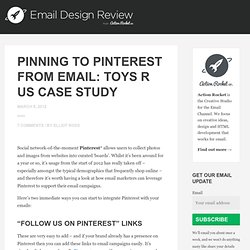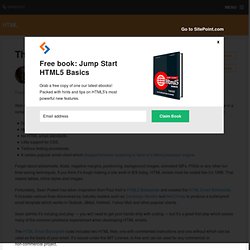

How to Use Email to Re-Engage Sleepy Subscribers. As an email marketer, you already know you're losing about 25% of your email list every year.

It happens; people lose interest in your company, change email addresses, unsubscribe -- it's all part of the email marketing game. But what if there was something you could do to re-engage some of those subscribers who actually are still interested in your company, but have just suffered a case of inbox overload? The way to do it is through an email re-engagement campaign, and it's a pretty simple process once all the steps are broken down, your list segmentation parameters are set, and your content is created. This post will walk you through why email re-engagement campaigns are crucial to your email marketing program's success, and exactly how you can implement one for yourself.
Why Email Re-Engagement Campaigns are Important And there are many, many other reasons your email subscribers could have gone inactive. How to Breathe Life Into a Boring Email Newsletter. If you've ever been on the receiving end of an email newsletter, you've likely been more bored than that shamelessly cute baby to the right.

I get it -- when you're not sure what to write, but you feel like an email has to go out, why not send an update about products, services, and what's going on at your company? Unfortunately, the result is often a whole lot of generic, irrelevant content sent to a poorly segmented list -- and that results in low open/click-through rates and lots of unsubscribes. That means best case scenario, your reputation is dinged in your subscribers' eyes; worst case scenario, your reputation is dinged by Return Path and future email deliverability is negatively impacted.
But there are awesome email newsletters out there. So what separates the triumphs from the tragedies? First, let's define what an email newsletter is, and what it isn't. Poorly Segmented List There are two ways to remedy this. Information Overload. Pinning to Pinterest from Email: Toys R Us Case Study. Social network-of-the-moment Pinterest* allows users to collect photos and images from websites into curated ‘boards’.

Whilst it’s been around for a year or so, it’s usage from the start of 2012 has really taken off – especially amongst the typical demographics that frequently shop online – and therefore it’s worth having a look at how email marketers can leverage Pinterest to support their email campaigns. The HTML Email Boilerplate. Web developers often moan about having to support five mainstream browsers, a few mobile devices and quirky behavior in a certain applications.

If you think we have it bad, spare a thought for those creating HTML emails. They must contend with: Dozens of email clients and versions.Multiple rendering engines.No HTML email standards.Little support for CSS.Tedious testing procedures.A certain popular email client which dropped browser rendering in favor of a Word processor engine. Forget about stylesheets, floats, negative margins, positioning, background images, animated GIFs, PNGs or any other fun time-saving techniques. If you think it’s tough making a site work in IE6 today, HTML emails must be coded like it’s 1998. Fortunately, Sean Powell has taken inspiration from Paul Irish’s HTML5 Boilerplate and created the HTML Email Boilerplate. The HTML Email Boilerplate code includes two HTML files: one with commented instructions and one without which can be used as the basis of your email. Do’s and don’ts for designing email newsletters. If you run an online business, drawing customers to your website is vital for your continued success.

While lots of effort tends to be spent on SEO and gaining new visitors, ensuring they return is another matter. Email newsletters are the perfect opportunity to inform your past visitors of reasons to return. Even if you don’t use email newsletters for your own business, you’ll likely run into a client who wants to use them sooner or later. Email is one of the oldest forms of online communication, and one that hasn’t evolved much since it’s inception due to it’s use on a wide variety of devices and a lack of solid formatting standards. Therefore, it’s safe to assume that at least one of your subscribers is going to be viewing your email on a 20-year-old computer running an obsolete operating system and you should take that into account.
Do use tables Before the days of CSS, tables were the way to place web elements where you wanted them. Example Don’t rely on background images Malibu by Aweber.